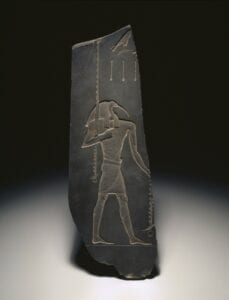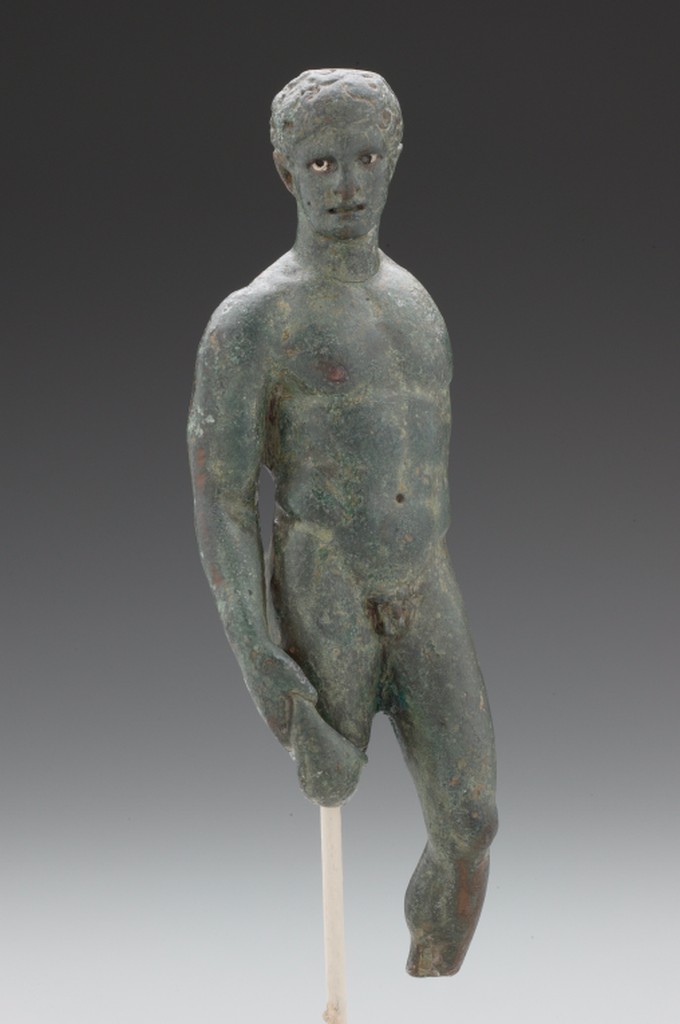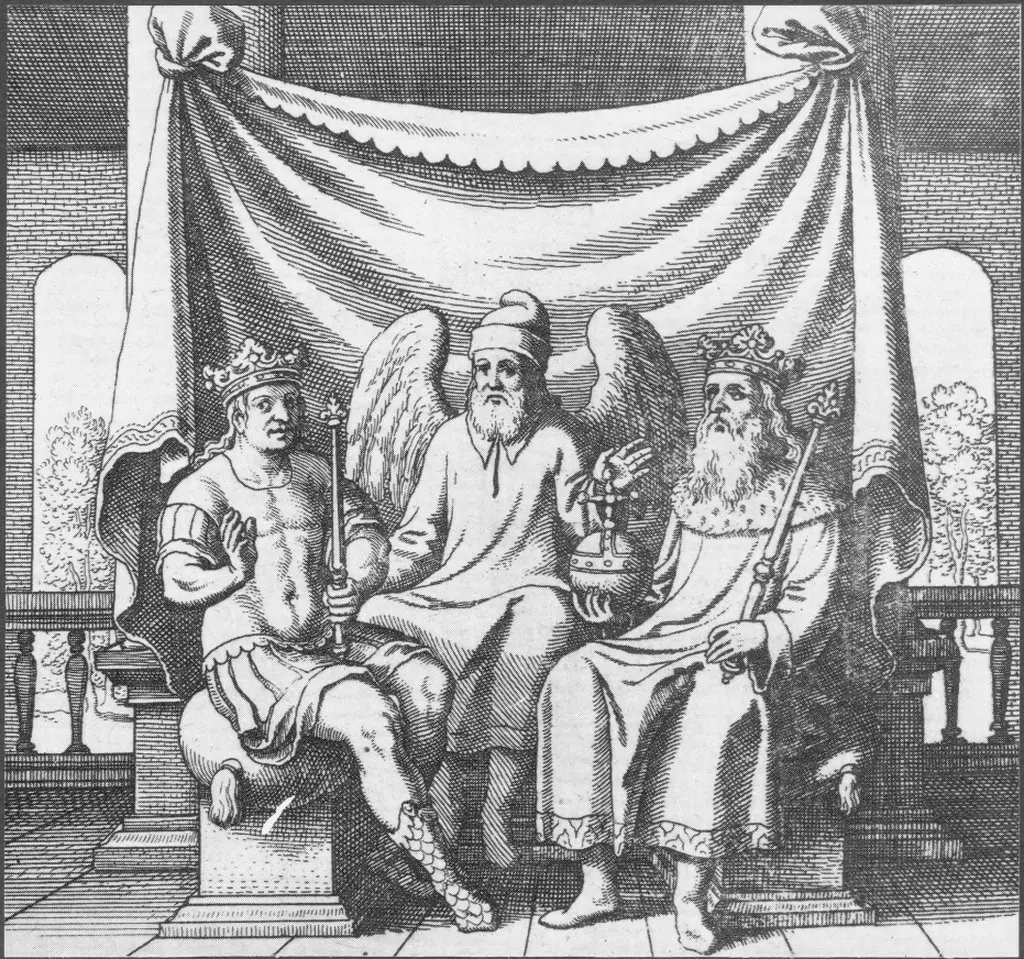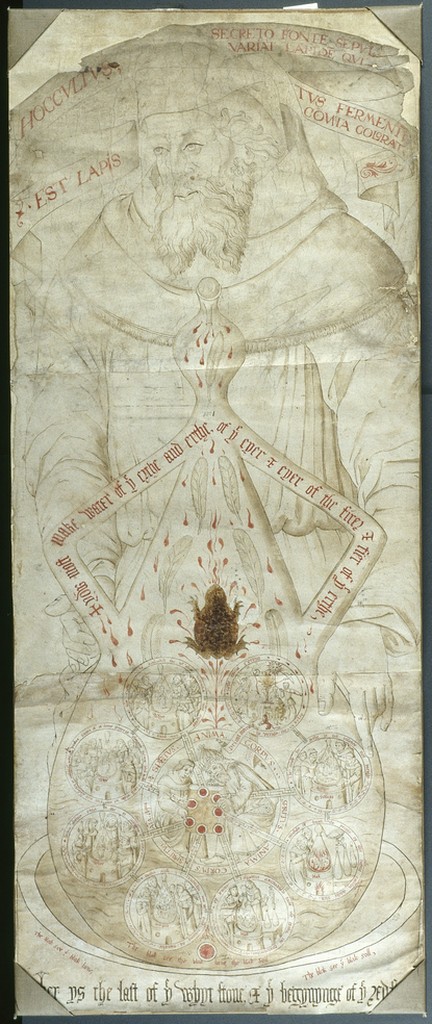Hermes Trismegistus – Greek God, Symbol, Mythology, and History
The legendary Hermes Trismegistus, foundational to the Western Occult, is a Hellenistic combination of the Greek god Hermes and the Egyptian god Thoth.

One of the more fascinating explorations in the collective Western Metaphysical tradition is learning more about the teachers who led the way toward where Witchcraft, Alchemy, Magic, and more are today. Among this pantheon of Philosophers, Magicians, Scientists, Occultists, and Practitioners, perhaps none cast so long a shadow as the legendary figure Hermes Trismegistus.
In his time on this planet, the mythic Hermes has traveled from his nebulous origins to his rightful place as a cornerstone of the Renaissance to an outright fraud to one of the forefathers of Occultism. Read on to discover the truth, at least as far as we know it, about Hermes’ history, mythology, and more.
Table of Contents
Hermes Mythology
The best introduction to Hermes Trismegistus (Trismegistus translates to “thrice greatest one”) is his mythology. Essentially, the figure we know as Hermes is an amalgamation of a handful of Greek, Egyptian, and Christian influences. So, in order to properly track the evolution of the Hermes god myth, let’s journey all the way back to the time of the pharaohs and ancient Egypt.
Egyptian God Thoth

The people of ancient Egypt began worshipping an ibis-headed figure by the name of, “Thoth,” starting around 3000 B.C. Thoth was the god of the moon, speech, leading souls to the underworld, learning and writing. Thoth was a central figure to the ancient Egyptians, who often depicted him alongside Ra in the solar collective. So important was Thoth to ancient Egyptians that every year, they sacrificed thousands of ibises in his honor. There’s a lot more to be learned from Thoth, but for now, let’s jump forward in time to 600 B.C. and ancient Greece.
Hermes Greek God
The next major influence in the Hermes mythology and the development of the Hermes god came from Greece. Starting around 600 B.C., travelers on long voyages began lining crossroads and property divisions with small piles of stones or cairns. Over time, the Greeks evolved these dividing or guiding stones, now called herms, into outright works of art. All over ancient Greece, phallic pillars and statues came to represent an emergent god in the Greek pantheon by the name of, “Hermes.”

What is Hermes the god of? He’s the Greek god of crossroads, travel, thieves, bankers, and no small amount of trickery. He also acts as a messenger between the gods and man and, like Thoth, helps to guide souls through the underworld.
Thoth and Hermes Combine
It’s unclear at exactly what point the Hermes Greek god and the Egyptian Thoth were conflated. We do know that it happened in Greek Alexandria, where all manner of old and new world ideas from ancient Egypt and contemporary Greece were combining and transforming. By the second century A.D., a figure going by the name Hermes Trismegistus had emerged in popular folklore. This figure, however, was both similar and entirely distinct from either the Egyptian Thoth or Greek Hermes god. Perhaps the most important distinction was that this incarnation was actually supposed to have walked the planet earth.
All About Hermes Trismegistus’ Myth
This new figure wouldn’t actually be “discovered” by the people who would go on to endear him to the modern world until some twelve hundred years later, but we’ll get back to that in the sections below. For now, let’s have a look at this new Hermes Trismegistus fellow as a mythic figure.

Hermes supposedly walked the planet in the pre-flood era. Several believers, or Hermeticists as they would go on to be known, even claim that he was a contemporary of Moses. He was a mythic guiding light for all who might seek esoteric knowledge or spiritual wisdom. He reportedly invented magic, writing, civilization itself, art, astrology, medicine, music, alchemy, and a whole lot more.
The Corpus Hermeticum
In addition to all of his world-defining creations, he also supposedly authored thousands of texts. Some of these went on to survive into the modern world as the Corpus Hermeticum or Hermetica – this is another area we’ll revisit when we get to the Hermes history sections below. For now, it’s important to know that the Hermetica supposedly contained divine knowledge delivered to Hermes Trismegistus during his lifetime.
If true, the esoteric secrets contained within this collection of texts would essentially be the original philosophy from which all others in the west (and much of the east) evolved. In his fantastic book The Secret Teachers of the Western World, author Gary Lachman refers to this philosophy as the, “Prisca Theologia.”
According to Lachman, such a, “perennial philosophy” is crucial to the development of all major western religions and spiritual schools. The Hermeticists would have us believe then that the figure of Hermes Trismegistus is the single source from which all religious thought, philosophy and everything that sprang from them (so, in essence, the entire western world) emerged. It’s no small wonder why his myth and legendary acts persist to this day.
Hermes Symbol
Another important factor in the Hermes god myth was Hermes’ symbol, with which modern westerners are no doubt very familiar.
The Caduceus, pictured above, represents the mythic man’s staff. The Caduceus was among the most powerful of the Hermes symbols and went on to be used in Alchemy, Astrology, Astronomy and more. It depicts two serpents copulating around a winged staff. As a magical tool, the Caduceus is often used to commune with the Greek god (or his Roman counterpart Mercury) or to bless any dealings having to do with commerce or travel.
Hermes History
Unfortunately, the historical accuracy of Hermes’ myth is undercut by the reality of the Hermetica‘s actual age. See, Hermes as an early Christian-era mythic figure became less important as Christianity spread and solidified is doctrine. Until the 1400s, Hermes Trismegistus was largely overlooked or treated as a quant figure from antiquity. Then, in 1471 a philosopher named Marsilio Ficino published the recently rediscovered Corpus Hermeticum. The results were incendiary and would go on to push all of Western civilization itself into a bold, new future.

For roughly the following two hundred years, Philosophers, Esotericists, Magicians, Scientists, and Mathematicians believed that the Corpus Hermeticum had indeed been authored by a man named Hermes Trisgmegistus. They believed this figure was older than the Western world, had been delivered divine wisdom from the gods and had bestowed this knowledge to mankind by way of the Hermetica.
Astute readers will no doubt notice that the above timeframe nestles itself perfectly into one of the Western world’s most enlightening periods: The Renaissance.
A Hermetic Renaissance
The publication of the Corpus Hermeticum entirely shook the Renaissance world. Thinkers like John Dee, Isaac Newton, and many other Middle Ages characters whose names and deeds went on to inform modernity were, to varying degrees, enthralled with and motivated by the Hermetic philosophy contained within. It, in part, motivated Isaac Newton to dive headlong into Alchemy. He dove in following the publication of his most famous work, The Mathematical Principles of Natural Philosophy: The Principia.
It was at the bedrock of the Philosophy of the time. And that philosophy went on to be crucial to the development of the Western world. Some even claim that, in this time, Hermes replaced Plato as the most important philosopher in the development of enlightened thinking. In short, Hermes was everywhere. And his tools (Alchemy, Magic, Astrology, Theurgy, etc.) informed the brightest minds of the day for nearly two hundred years.
The Man Who Never Was
Unfortunately, the Renaissance-era fascination with Hermes as a historical figure began to crumble in 1614. Linguistic analysis revealed that the Hermetica‘s actual time of origin was likely in the first or second century A.D. in Greek Alexandria.
This meant that, not only were the texts not written by Hermes, but they were likely penned by early Christians. This is in part why they resonated with the Renaissance-era Hermeticists. Following this, the Church actively began persecuting Hermetic thought and thinkers.
Their chief problem was with the Hermetic practice of Theurgy. We might better recognize Theurgic acts today by terms like, “Invocation and Evocation.” Essentially, Theurgy was an attempt to manifest divine powers through a variety of internal and external rites, rituals, and acts.
Hermetic Theurgy claimed that the ultimate state of transformation was to become like a god oneself. Check out the Alchemy article here on-site for a little bit more of a deeper dive on how they actually performed this.

Hermes Trismegistus in the Arab World
As his reputation became increasingly rejected, criticized, and attacked in the Christian West, the myth of Hermes Trismegistus continued to spread in the Muslim world. The Arabs drew connections with Hermes and a god within their tradition: Idris. In northern Mesopotamia, a city called Harran assumed vital importance in the ancient world.
It was a trading hub, a marketplace of ideas via a well-known university and a cultural epicenter. As the Christian persecution of non-monotheists intensified in places like Alexandria, several thinkers, philosophers, magicians, occultists, etc. found their way to Harran and along with them, the Corpus Hermeticum. They helped to make of Harran a pagan stronghold whose core philosophies were multicultural, esoteric and polytheistic.

Pagan thought was so deeply entrenched in Harran that early Christians even came to refer to the city as, “city of pagans.” This naming followed a failed attempt to convert the population. By the ninth century A.D., Harran had come under Muslim rule. It was forced to establish itself as among the religions protected by the Koran. Harranians settled on being referred to as, “Sabians.”
They included both Hermes Trismegistus and their collection of Hermetic texts as among their holy works and men. For a time, Hermes was again alive and influential in a vibrant, ancient city.
The Hermetic surge in the Arab world would go on to last for a few hundred years. It was ultimately stomped out by rising Muslim fundamentalism. But its spread in the city of Harran was vital in the effort to keep Hermes alive as the Christian world increasingly vilified, maligned, and punished all those who continued to believe in Hermes Trismegistus.
What Happened to Hermes Trismegistus? – How He Shaped the Modern World
The spread of Hermetic thought in the Arab world helped to ensure its continued proliferation. But, this did not come without a long period of Hermeticism and Esotericism generally being driven underground.
The era following the revelation of the true age of the Hermetic texts, saw the church move headlong into The Reformation. Among other things, this meant that thinkers like Hermes were entirely unwelcome in the new Christian world. The brilliant minds who had once embraced Hermetic philosophy now turned from it altogether. And the world entered a new era of Humanism.
People were less concerned with developing a divine relationship and more with rhetoric, logic, and the like. This, along with church persecution, meant that there wasn’t a place for our old friend Hermes Trismegistus in the Western world.

For the following centuries, the Hermetic myth would be kept alive by secret orders, philosophers, and alchemists. However, Hermes wouldn’t reenter the popular Esoteric lexicon until the Metaphysical surge of the Transcendental period.
Ideas like Mesmerism, Pantheism, and the exaltation of the natural world were on the rise. Out of this mix arose the minds directly responsible for the creation and popularization of Western Esotericism.
These include: Madame Helena Blavatsky, Aleister Crowley, Gerald Gardner and many more. While not all of these players lived during this era, each was directly inspired by the resurgence of Hermetic philosophy.
These ideas, along with many others, would go on to form the bedrock of the Western Magical tradition.
What is Hermes the God of?
On the Egyptian side, Hermes was the god of the moon, communication, & leading souls to the underworld. On the Greek side, he’s the god of crossroads, travel, thieves, bankers, and trickery.
Did Hermes Trismegistus exist?
Probably not, though some believers claim that he may have been a contemporary of Moses.
Is Hermes and Thoth the same?
Not quite. The combination of the Greek Hermes and Egyptian Thoth in Greek Alexandria created the Hellenistic Hermes Trismegistus.
What are the 7 laws of Hermes Trismegistus?
The “The Kybalion,” outlines the seven Hermetic Principles of Mentalism, Correspondence, Vibration, Polarity, Rhythm, Cause and Effect, and Gender.

Joel Austin is an actor, writer, and filmmaker who’s lived all over the country. He’s been an avid Salem lover since the 2010’s.




I am very grateful to have found all this information about Hermes Trismegistus. As an artist, I have been a spiritual seeker all my life and have found HT to be one of the most mysterious, and therefore, most fascinating beings of both the physical human realm and the metaphysical realm.You have been very helpful to me for my doing whatever it is I am doing in my mental and intuitive and heartful seekings. Thank you!
Don’t even exist 👁️💀👁️
We Know